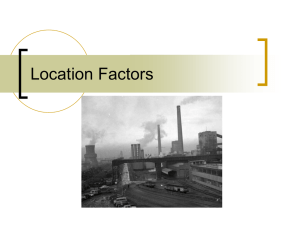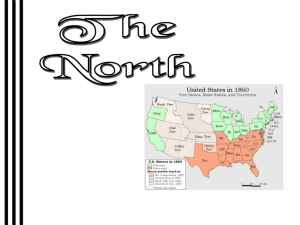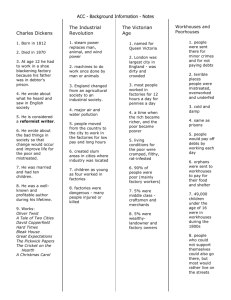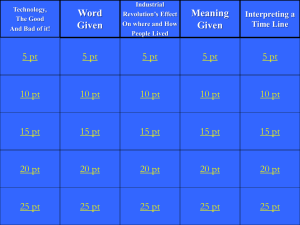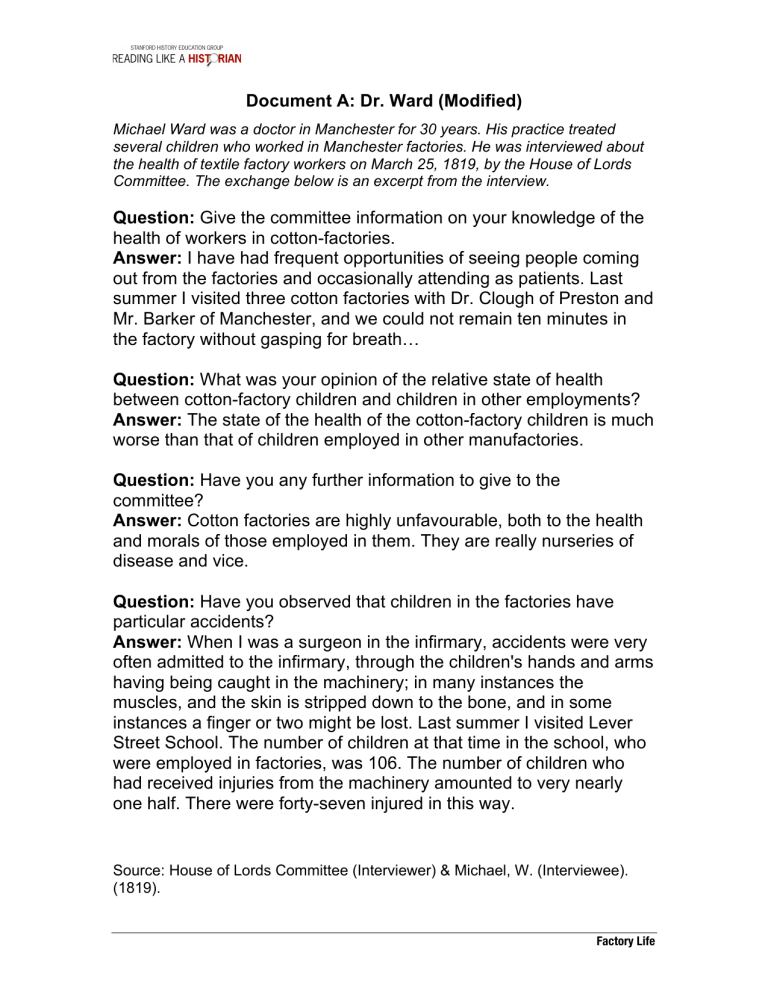
Document A: Dr. Ward (Modified) Michael Ward was a doctor in Manchester for 30 years. His practice treated several children who worked in Manchester factories. He was interviewed about the health of textile factory workers on March 25, 1819, by the House of Lords Committee. The exchange below is an excerpt from the interview. Question: Give the committee information on your knowledge of the health of workers in cotton-factories. Answer: I have had frequent opportunities of seeing people coming out from the factories and occasionally attending as patients. Last summer I visited three cotton factories with Dr. Clough of Preston and Mr. Barker of Manchester, and we could not remain ten minutes in the factory without gasping for breath… Question: What was your opinion of the relative state of health between cotton-factory children and children in other employments? Answer: The state of the health of the cotton-factory children is much worse than that of children employed in other manufactories. Question: Have you any further information to give to the committee? Answer: Cotton factories are highly unfavourable, both to the health and morals of those employed in them. They are really nurseries of disease and vice. Question: Have you observed that children in the factories have particular accidents? Answer: When I was a surgeon in the infirmary, accidents were very often admitted to the infirmary, through the children's hands and arms having being caught in the machinery; in many instances the muscles, and the skin is stripped down to the bone, and in some instances a finger or two might be lost. Last summer I visited Lever Street School. The number of children at that time in the school, who were employed in factories, was 106. The number of children who had received injuries from the machinery amounted to very nearly one half. There were forty-seven injured in this way. Source: House of Lords Committee (Interviewer) & Michael, W. (Interviewee). (1819). Factory Life Document B: Dr. Holme (Modified) Edward Holme was a physician who lived in Manchester England during the first half of the nineteenth century. He was an active member various academic societies and associations and a well-regarded doctor. In 1818, he was interviewed by the House of Lord’s Committee about health conditions of factories. The exchange below is an excerpt from the interview. Question: How long have you practiced as a physician in Manchester? Answer: Twenty-four years… Question: Has that given you opportunities of observing the state of the children who are ordinarily employed in the cotton-factories? Answer: It has. Question: In what state of health did you find the persons employed? Answer: They were in good health generally. I can give you particulars, if desired, of Mr. Pooley’s factory. He employs 401 persons; and, of the persons examined in 1796, 22 were found to be of delicate appearances, 2 were entered as sickly, 3 in bad health, one subject to convulsions, 8 cases of scrofula (tuberculosis): in good health, 363. Question: Am I to understand you, from your investigations in 1796, you formed rather a favourable opinion of the health of persons employed in cotton-factories? Answer: Yes. Question: Have you had any occasion to change that opinion since? Answer: None whatever. They are as healthy as any other part of the working classes of the community…. Question: Who applied to you to undertake the examining of these children in Mr. Pooley’s factory? Answer: Mr. Pooley. Source: House of Lords Committee (Interviewer) & Holmes, E. (Interviewee). (1818). Factory Life Document C: John Birley (Modified) John Birley was born in London in 1805. He lost both his parents by the age of 5, and he was sent to the Bethnal Green Workhouse. He soon began working at the Cressbrook factory. John was interviewed about his experiences as a child worker at the Mill in 1849. An article on his life was published in the newspaper, the Ashton Chronicle in May 1849. Below is an excerpt from the article. Our regular (working time) time was from five in the morning till nine or ten at night; and on Saturday, till eleven, and often twelve o'clock at night, and then we were sent to clean the machinery on the Sunday. No time was allowed for breakfast and no sitting for dinner and no time for tea. We went to the mill at five o'clock and worked till about eight or nine when they brought us our breakfast, which consisted of water-porridge, with oatcake in it and onions to flavour it... We then worked till nine or ten at night… Mr. Needham, the master, had five sons: Frank, Charles, Samuel, Robert and John. The sons and a man named Swann, the overlooker, used to go up and down the mill with sticks. Frank once beat me till he frightened himself. He thought he had killed me. He had struck me on the temples and knocked me dateless. He once knocked me down and threatened me with a stick. To save my head I raised my arm, which he then hit with all his might. My elbow was broken. I bear the marks, and suffer pain from it to this day, and always shall as long as I live… I was determined to let the gentleman of the Bethnal Green parish know the treatment we had, and I wrote a letter put it into the Post Office… Sometime after this three gentlemen came down from London. But before we were examined we were washed and cleaned up and ordered to tell them we liked working at the mill and were well treated. Needham and his sons were in the room at the time. They asked us questions about our treatment, which we answered as we had been told, not daring to do any other, knowing what would happen if we told them the truth Source: Birley, J. (19 May 1849). The Ashton Chronicle. Factory Life Document D: Edward Baines (Modified) Edward Baines was a newspaper journalist and editor for the Leeds Mercury Newspaper. In the 1830s, he was elected to Parliament, and served there as a political liberal. Although Baines supported the end of slavery and various political reforms, he opposed legislation regulating factories and extending voting rights to the English working class. These are excerpts from his book History of the Cotton Manufacture in Great Britain. Above all, it is alleged that the children who labor in mills are often cruelly beaten by overlookers, that their feeble limbs become distorted by continual standing and stooping, that in many mills they are forced to work thirteen, fourteen, or fifteen hours per day, and that they have not time either for play or for education. Factory Inspectors who have visited nearly every mill in the country have proved that views mentioned above of labor in factory mills contain a very small portion of truth. It is definitely true that there have been instances of abuse and cruelty in some factories. But abuse is the exception, not the rule. Factory labor is far less injurious than many of the most common jobs of civilized life. The human frame is liable to an endless variety of diseases. Many of the children who are born into the world, and attain the age of ten or twelve years are so weak, that under any circumstances they would die early. Such children would sink under factory labor, as they would under any other kind of labor, or even without labor. I am not saying that factories are the most agreeable and healthy places, or that there have not been abuses in them, which required exposure and correction. It must be admitted that the hours of labor in cotton mills are long, being twelve hours a day on five days a week, and nine hours on Saturday. But the work is light, and requires very little muscular exertion. It is scarcely possible for any job to be lighter. The position of the body is not injurious: the children walk about, and have opportunity to sit down frequently if they want to. On visiting mills, I have noticed the coolness and calmness of the work-people, even of the children, whose attitudes are positive and not anxious or gloomy. Source: Baines, E. (1835). History of the Cotton Manufacture in Great Britain. Factory Life Guiding Questions Document A: Dr. Ward 1) (Sourcing) Why is Dr. Ward being interviewed by the House of Lords Committee? Dr. Ward was being interviewed about The Health of the textile factory workers. 2) (Close Reading) What does he mean when he refers to factories as “nurseries of disease and vice”? This means that the factories are a breeding ground for disease and vice. 3) (Close Reading) What evidence does Dr. Ward use to back his claim that factories were unhealthy and unsafe for children? Dr. Ward has been to these factories and has seen how unhealthy they are for children first hand. Document B: Dr. Holme 1) (Sourcing/Corroboration) How is the source information for this document similar to and different from document A? Dr. Holme was also interviewed by the House of the lord’s committee about the health of the children in the factories 2) (Close reading) What evidence does Dr. Holme use to back his claim about the health of children in factories? Do you think this is convincing evidence? Dr. Holme listed of the number of people he has seen in good health and the people who weren’t. I think it is strange how he remembers the numbers of the factory. 3) (Close reading) Why might it matter that Mr. Pooley asked Dr. Holme to examine the children at his factory? Dr. Holme has a favorable opinion of the factories 4) Which document, A or B, do you think is more trustworthy? Why? I think that document A is more trustworthy because he gave other doctors names that would agree with his opinion on the factories. He also answered the questions in full. Factory Life Document C: John Birley 1. (Sourcing) What type of document is this? When was it written? This document was written in1849. This would be a biography document. 2. (Sourcing) How old was John Birley when this account was published? He was around 39 years old. 3. (Corroboration) Which document, A or B, does this account more closely match? How? It more relates to document B because it says these factories are pretty good places to work. 4. (Close reading) Why did John Birley not tell the truth about life working in the mill to the inspectors? I would say that Birley is he more trustworthy source because he had to work in the factories. He was more experience in them. Document D: Edward Baines Edward Baines wrote this 1. (Sourcing) Who wrote this article? When was it written? article in 1835. 2. (Sourcing) Why did Baines write this article? Baines wrote this article because of his view to end slavery and the legislation. 3. (Close reading) What does he mean in the second paragraph, when he states, “But abuse is the exception not the rule”? I think this means that abuse is excepted but does not have to happen to get things done. 4. (Close reading) What is Baines’ main point in the final paragraph? In this paragraph Baines believes that there could be worse places to work. He describes the factory as calm and cool. He also states Factories may not be the best thing in the world but at the end of the day someone has to do it anyways. 5. (Corroboration) Which document, A or B, does this account more closely match? How? Document B because they mainly talk about how the work places are nasty but still someone has to work. 6. Who do you think is a more trustworthy source, Birley or Baines? Why? Factory Life Making a Claim: Do you think that English textile factories were bad for the health of working class families? Write a paragraph in the space below, using evidence from the documents to support your claims. I think the english textile factories were bad for health. As stated by John Birley in his statement to the Ashton Chronicle there was little food and especially long hours. In addition to those problems Mr.Birley also said abuse was rampant and he was nearly killed. Dr. Ward of manchester also echoed these concerns. He told the House of Lords Committee that they were houses of filth full of disease. Dr. Ward let people know that the children in the factory that were injured were over half. Factory Life
